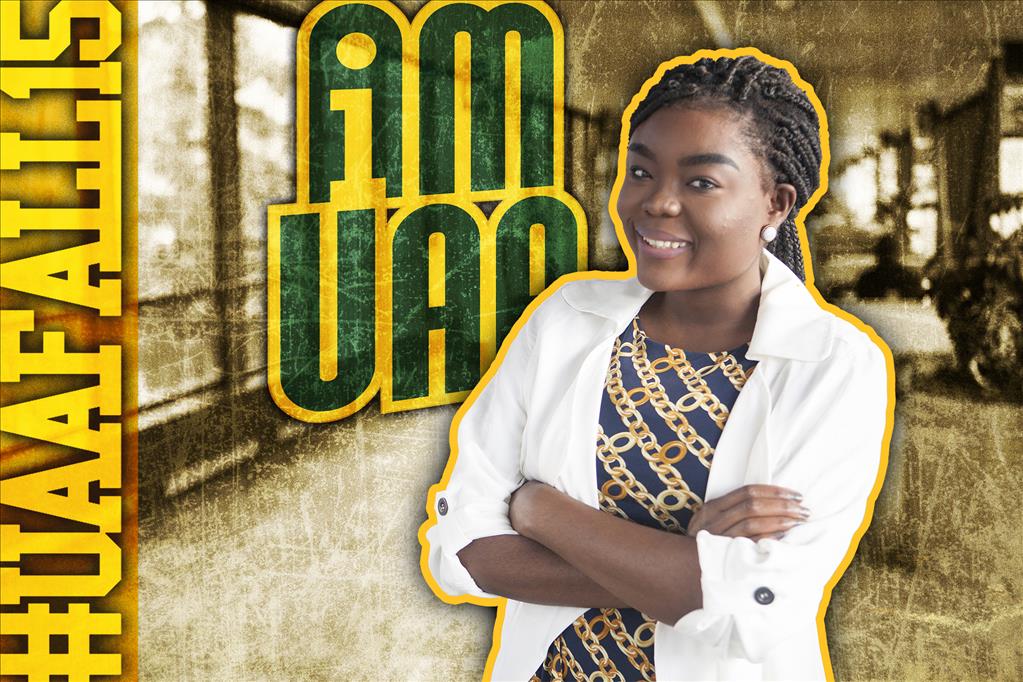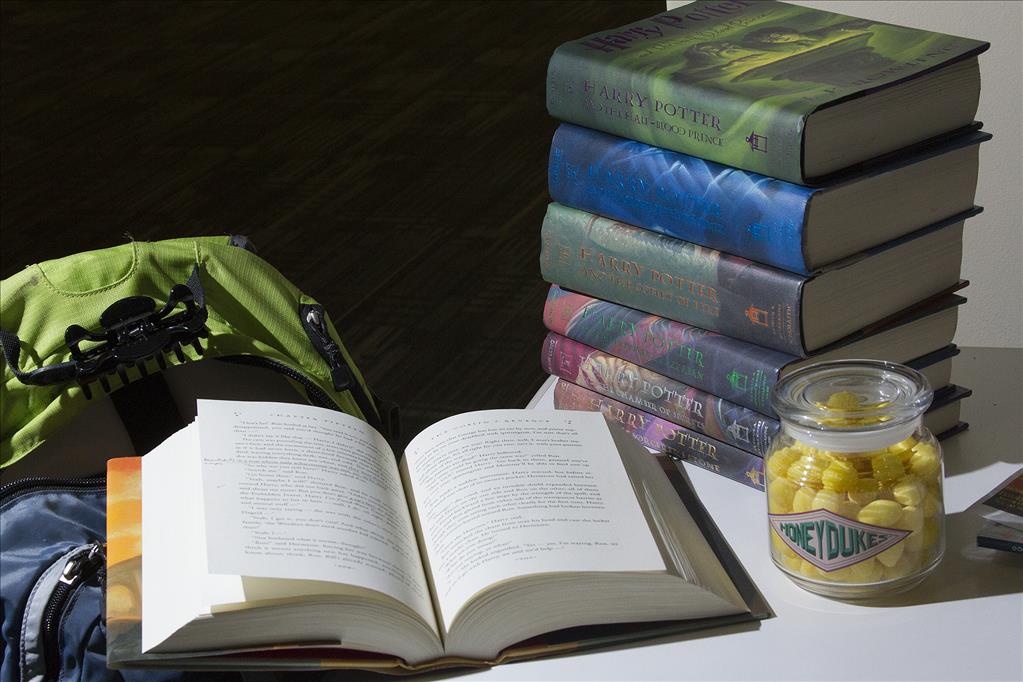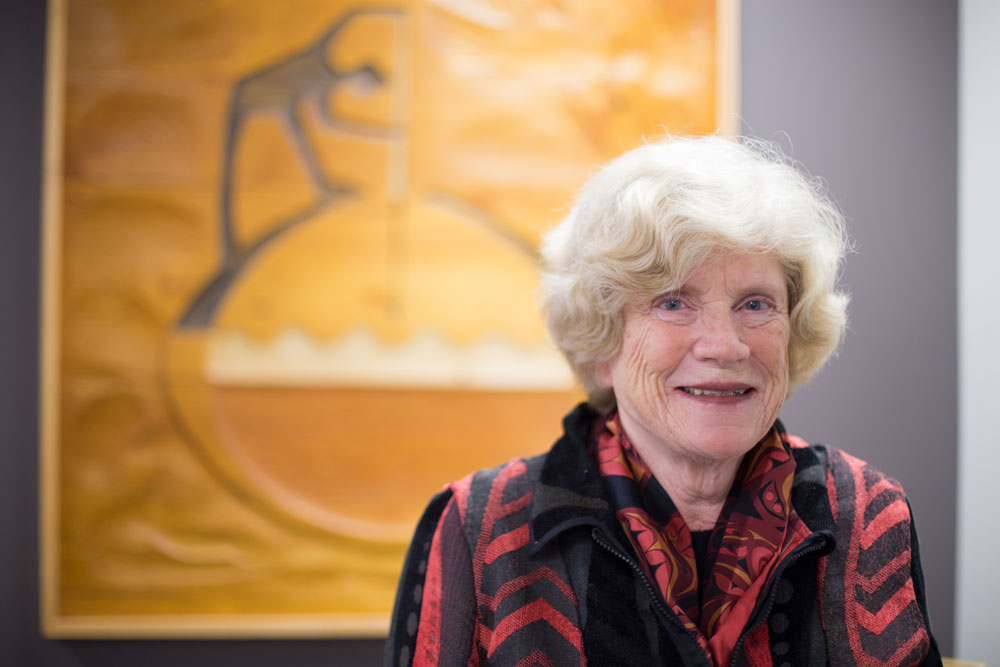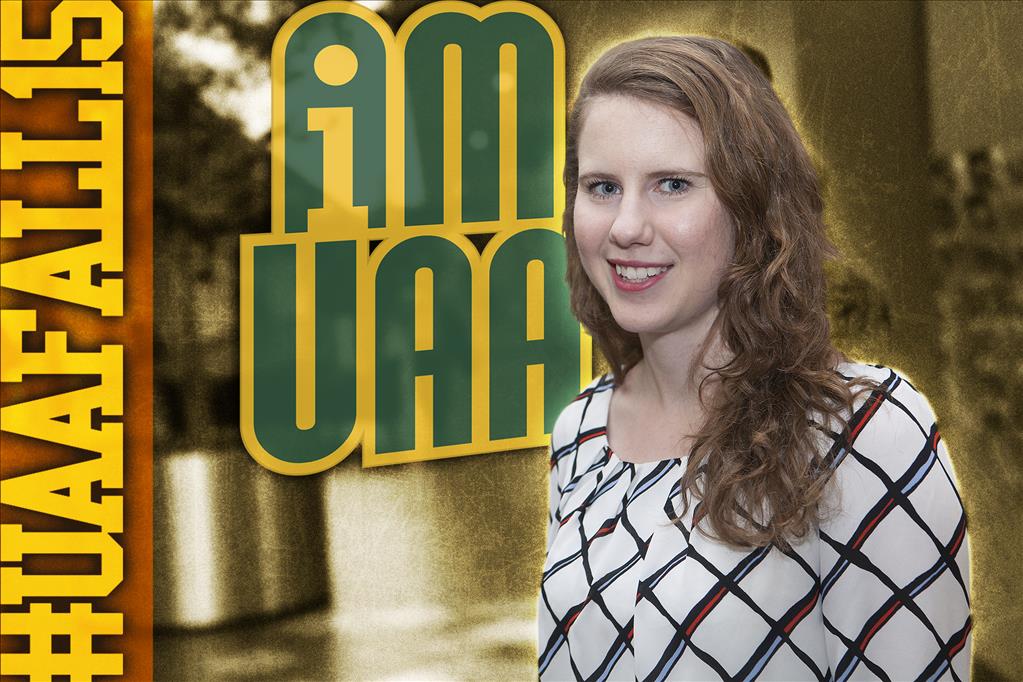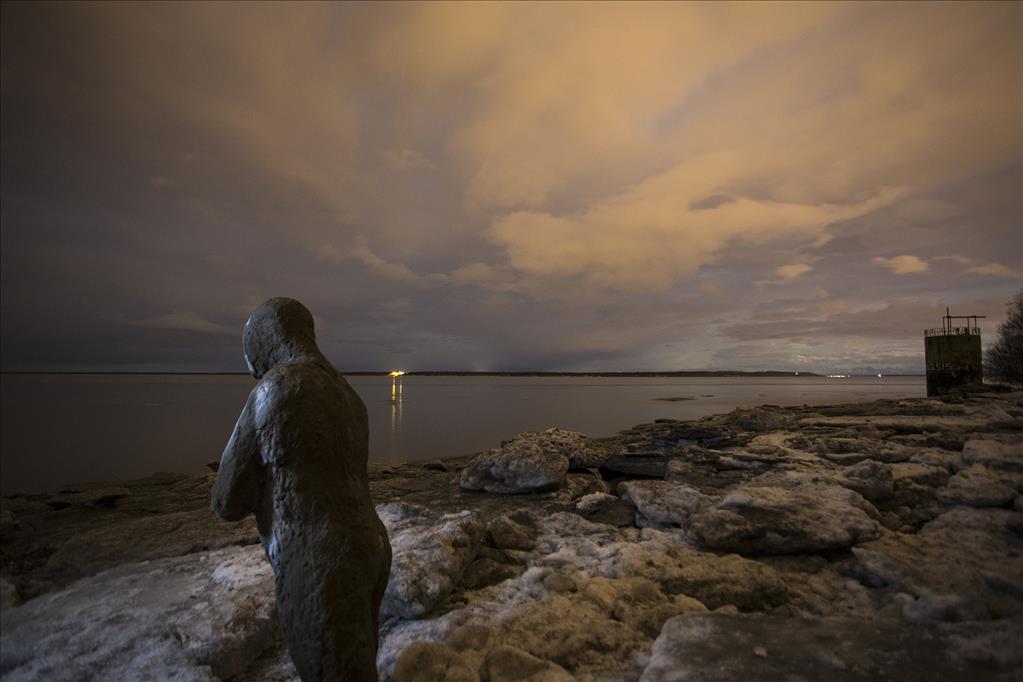‘I created my home away from home’
by Tracy Kalytiak |
Crystalyn Lemieux was one of those kids who wanted to try everything, journey everywhere, join everything-track, cross country, cheerleading, choir, Adventure Scouts, Big Brothers Big Sisters and a long list of other organizations.
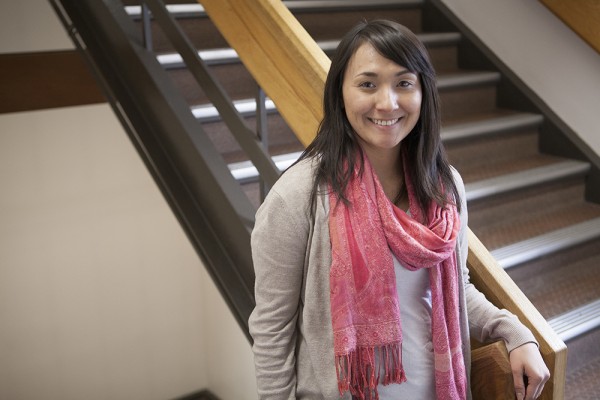
Crystalyn Lemieux, who is graduating from UAA in May, hopes to create genuinely culturally
relevant health programs for Alaska Natives. (Photo by Philip Hall/University of Alaska
Anchorage)
"I signed up for every activity possible so I could travel outside Southeast Alaska," said Lemieux, who is Tlingit and grew up in Haines. "I volunteered a lot in the community and at the church I went to. I was just always involved in something."
Her penchant for pitching in to participate and help gave her courage when she left behind her Southeast hometown and moved to Anchorage to launch her college career.
"When I came to college I was really shy," she said. "It was really awkward to go from such a small town to such a large community.
On-campus housing was limited, so I lived off campus and didn't meet a lot of students. I was homesick and cried a lot. Anchorage was scary."
Lemieux gradually learned to relax.
"I started volunteering," she said. "I created my home away from home."Forming new connections
Six years later, Lemieux is preparing to graduate from UAA with a promising résumé, filled with opportunities she seized to grow her life and enhance the community around her. She's volunteered at Providence Children's Hospital, joined Recruiting and Retention of Alaska Natives into Nursing (RRANN)-"That helped me get more involved in the Native community on the UAA campus."-helped at the Assembly of God soup kitchen, participated in UAA's Native Student Council, worked in UAA's Cama-i Room and maintained that vital connection with Alaska Native Student Services.
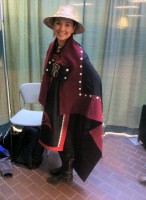
UAA grad-to-be Crystalyn Lemieux, who is Tlingit, grew up in Haines. (Photo courtesy
of Crystalyn Lemieux)
"Signing up for something teaches me something beneficial for my success," she said.
Students arriving in Anchorage from homes in rural areas can thrive at UAA, Lemieux says, if they reach out to make connections similar to the ones she cultivated.
"I would definitely recommend they go to Alaska Native Student Services even if they don't feel like it is a place for them," she said. "It may be they might be intimidated, but everyone in there is really welcoming. I had felt that same way but after being there a while it started to feel more like home. Being in the Cama-i Room too, I had those same feelings."
Lemieux's uncle advised her to find people with cultures and backgrounds similar to hers.
"After a while, they become your extended family," she said. "You'll still miss your family but you won't feel that extreme homesickness you're probably experiencing. My first year here, I cried like at least once a week. My family's close-knit-we send group text messages and group Facebook messages, we're constantly posting on each other's walls. My sisters are my best friends. It was really hard for me to adapt and be away from that all of a sudden, not have that social support."
Getting involved with Alaska Native Student Services, Alaska Native Student Council and the Cama-i Room helped.
"The Native community here is super supportive," she said. "When I go to events, I see a lot of the same people. It's kind of like having that family structure. That's a big deal. It could make a big difference in whether a student stays or goes."
Lemieux appreciates efforts UAA is making to reach out and provide a warm environment for Alaska Native students, including the installation of "Welcome" signs inscribed with a variety of Alaska Native languages, but believes more can be done.
"You can take an Alaska Native art or language course," she said. "They could market Alaska Native studies programs as much as others and professors could give extra credit to students for attending Alaska Native events."
Carving out a calling
Lemieux has wanted to work in health care since she was 5 years old, the day she choked on a penny. An ambulance crew showed up and a man named Al calmed her down, calmed her panicked mother, gave Lemieux a teddy bear.
"That put an imprint on me," she said. "I want to be in health care. I really liked his ability to stay calm and help other people feel comfortable in a very uncomfortable situation."
Lemieux later attended a career day and visited a Sitka hospital to see whether she'd prefer being a physical therapist or a nurse. "I liked what the nurse did," she said.
At UAA, Lemieux started with a pre-nursing major and learned about RRANN.
"I'm always about signing up for things that will teach me something and be beneficial for my success," she said. "It's there to help me. My mom's a family caseworker; she's always sending me resources. She sent that to me [about RRANN] and finally a student I had told said, 'You should come with me.' Otherwise I probably wouldn't have gone by myself. That's another thing I'd recommend-if you're too scared to go by yourself, find someone who you can go with."
Finding cultural relevance
Lemieux eventually decided to follow another career path in health, and changed her major to health sciences. She completed a summer internship and practicum with First Alaskans Institute that transformed her view of the world, her perception of herself and her feelings about what she was capable of doing with her life.
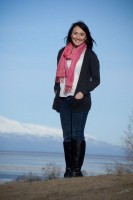
Crystalyn Lemieux grew up in a coastal town and misses living close to the water.
She likes visiting the Point Woronzof and Kincaid Park areas of Anchorage. (Photo
by Allison Castillo)
"It taught me a lot about Alaska Native history and helped me be OK with being Native, finally," she said.
In a speech she gave for the Alaska Native Oratory Society, she explained: "I had always known that there was something wrong or missing and maybe I struggled with both. I had always known I wasn't confident, meant to be a leader, and I was not even sure what I was even doing at college. I didn't feel like I fit in and I didn't really even feel comfortable in my own brown skin or comfortable with being Native."
The FAI program sparked an interest that motivated Lemieux to work at the Alaska Native Studies department with Dr. Maria Williams and join the UAA Native Student Council.
"Then I started to feel like I knew why I was at college and began to start to feel more comfortable with myself and being Native," she wrote. "After working in all these different areas with Native people, I began to realize and learn what is really happening around me."
Lemieux was placed with RuralCAP community development department, doing research on prevention and intervention programs.
"I thought, 'Oh my gosh, I'm a product of prevention and intervention programs!'" she said. "Because I did so many programs in Haines it was insane. I really believe in those programs."
What Lemieux noticed during her internship was that the cultural programs seemed to make more of an impact and had more of an influence than the Western models. "What I want to do with my degree is find a way to make these programs culturally relevant," she said. "Not just the cheap culturally relevant-making our culture fit in a Western model. Really what should be happening is the culture is the foundation of it and then the Western parts can fit into the cultural model-not the other way around."
Using a person's culture can teach and help a person heal from past or current trauma, Lemieux said.
"The Maori people believe, 'Don't teach me my culture; use my culture to teach me,'" she said. "Reconnecting and realizing your culture is the foundation of your resiliency. If someone is missing that cultural piece, well, how can we expect them to heal or to be healthy if we can't go back and allow them that space to learn about their culture and heal?"
Written by Tracy Kalytiak, UAA Office of University Advancement
 "‘I created my home away from home’" is licensed under a Creative Commons Attribution-NonCommercial 4.0 International License.
"‘I created my home away from home’" is licensed under a Creative Commons Attribution-NonCommercial 4.0 International License.










